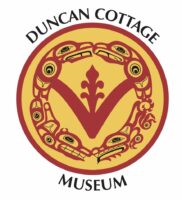The Duncan Cottage Museum is the former home of the late missionary William Duncan (1831-1918), who worked among the Tsimshian of British Columbia and Alaska for sixty-one years. In 1887, he was one of the leaders of the mass-migration of eight hundred and twenty three Tsimshian people from Metlakatla, British Columbia to what is now Metlakatla, Alaska. Duncan aided Tsimshian leaders in the effort to petition the US government for the land rights that they were denied in British Columbia. In 1891, the island upon which Metlakatla, Alaska is located was declared the Annette Island Indian Reserve by a Congressional Act. It remains the only Indian Reserve in the state of Alaska. Constructed in the same year as this monumental decree, Duncan’s six-room cottage was built especially for him by Tsimshian carpenters using hand-milled red cedar. He dedicated each room to his work as Metlakatla’s religious leader, business manager, primary school teacher, and health care practitioner. Upon Duncan’s death in 1918, his cottage was turned into a museum. Its collection primarily consists of his personal belongings, books, and the tools used for his diverse trades. In 1972, The Duncan Cottage Museum was designated a national historic site. It is under the auspices of Metlakatla Indian Community, the governing body of the Annette Island Indian Reserve.

